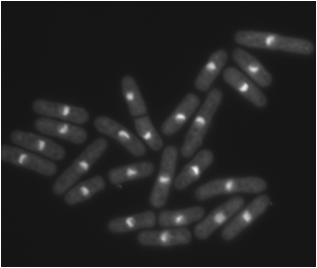Research

The near-ubiquitous transcription of eukaryotic genomes produces a large array of transcripts differing in size, abundance and protein-coding capability. It is clear that RNA polymerase II (RNAPII) transcribed RNAs are more than just messengers between gene and protein. This extensive transcription also gives rise to thousands of non-coding transcripts (ncRNAs), including small interference RNAs, micro-RNAs, and long ncRNAs. These ncRNAs contribute to complex patterns of gene expression and participate in epigenetic regulation including heterochromatin formation and chromatin remodeling. However, many ncRNAs are barely detectable in wild-type cells, although they can be easily identified in mutant cells with defects in RNA surveillance or quality control machinery. This finding suggests that many ncRNAs are normally rapidly destroyed. These transcripts, which appear in the relevant mutant backgrounds, are often referred as aberrant RNAs.
In fission yeast, nearly half of the neighboring genes are convergent genes, with their open reading frames transcribed in convergent direction. Interestingly, most of antisense transcripts in S. pombe derive from readthrough transcription from one gene into an adjacent convergent gene. Readthrough antisense RNAs may result in transcriptional interference of the downstream-positioned gene, and therefore can be used as a general mechanism of gene regulation. However, uncontrolled accumulation of antisense RNAs can be deleterious because they can adversely affect gene expression and modify the epigenetic profiles of genomes. Therefore, the levels of ncRNAs are strictly monitored by elaborate RNA quality control and surveillance mechanisms. One of the essential components of nuclear RNA surveillance pathway is the exosome complex that eliminates aberrant RNAs via its 3’-5’ exoribonuclease. How the exosome targets specific RNA substrates is not clear; in addition, the mechanism by which the cells distinguish mature and aberrant RNAs is poorly understood.
To understand the regulatory mechanism of ncRNAs, my laboratory will focus on investigating the mechanisms that fine-tune the production and amount of ncRNAs in fission yeast. Yeast is an excellent model organism for studying transcriptional regulatory networks because it is a well- studied eukaryote at both the genetic and physiological levels. Importantly, most biological principles in gene expression, as well as the functions and regulatory mechanisms of ncRNAs, are conserved from yeast to humans. My laboratory aims to elucidate the exact function(s) of RNA quality control factors in suppression of antisense RNAs. This investigation will answer one of the most challenging questions in the field, which is how RNA surveillance machineries can selectively target their substrates from the complete spectrum of RNAs. Furthermore, we want to expand our current research to identify and characterize the novel factors that regulate the amount of the antisense transcriptome.